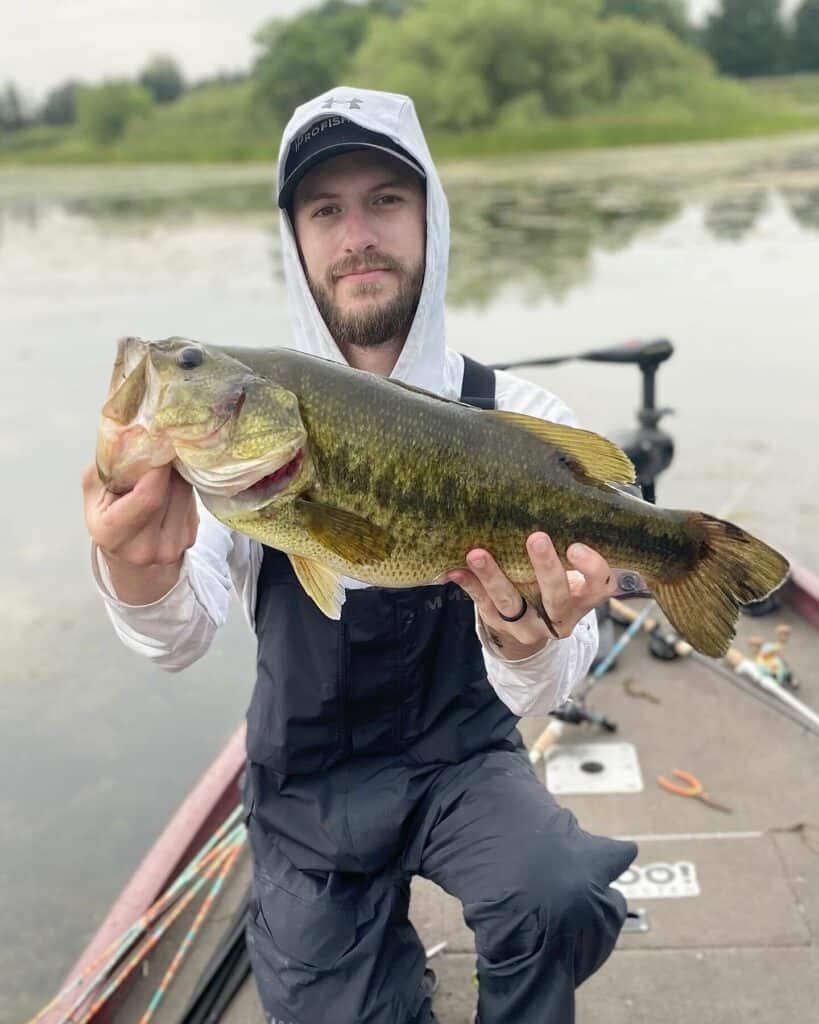Bass fishing is a captivating endeavor, combining patience, instinct, and a deep understanding of the natural world. While each season has its unique charm, the post spawn period is particularly interesting and challenging for anglers. This phase, when bass recover from spawning and transition back to their routine, presents a prime opportunity for resourceful fishermen to make their move.

Understanding the Post Spawn Period
In the complex world of bass behavior, the post spawn period refers to the phase after the spawn – a time when bass breed. Depending on the climate and geographical location, the bass post spawn period can begin anytime from late spring to early summer.
Feeding Habits During Post Spawn
During this phase, bass are primarily focused on recuperation and feeding. Having expended a great deal of energy during the spawn, they are now on the hunt for substantial meals. This makes them more aggressive and less choosy about their prey, offering a great opportunity for anglers to secure a significant catch.
Feeding Habits During Post Spawn: A Deeper Dive
Following the exhaustive and strenuous spawning period, bass switch their attention toward replenishing their spent energy reserves. They enter a phase of recuperation, during which feeding becomes their primary objective.
Understanding the feeding habits of post spawn bass can give the knowledgeable angler a distinct advantage. Having expended substantial energy during the spawn, these fish are in a state of acute nutritional deficit. Their need for high-energy food sources to recover becomes more pronounced, making them more aggressive in their feeding habits.
Bass at this time can be quite opportunistic, choosing to consume larger prey items than they might typically pursue. They tend to be less selective about their food choices, meaning that a wider range of lures and bait may attract their attention. Prey such as shad, bluegill, and crawfish, or lures that mimic these food sources, can often prove to be particularly successful.
It’s important to note, however, that post spawn feeding habits can vary depending on the time of day. In the early morning and late afternoon, when temperatures are cooler, bass are more likely to hunt in the shallows. During the heat of the day, they often retreat to deeper water, where they continue their search for food in cooler conditions. Recognizing these patterns can help anglers tailor their approach, maximizing the effectiveness of their efforts.
Furthermore, while bass are more aggressive during this period, they can also be somewhat unpredictable. The post-spawn phase is a transitional period for bass, and their behavior can fluctuate based on a variety of factors, including water temperature, availability of prey, and overall health. This variability demands flexibility from the angler and a willingness to adapt to changing conditions.
In sum, understanding and capitalizing on the aggressive, less selective feeding habits of post spawn bass can present great opportunities for successful angling. By harnessing this knowledge and adapting strategies accordingly, the post spawn period can prove to be a highly rewarding time for bass fishing.
Identifying Post Spawn Bass Fishing Locations
Bass don’t stray far from their spawning areas initially. Start by looking in the shallows near spawning beds. As the post spawn period progresses, bass begin migrating to deeper waters in search of cooler temperatures and abundant forage. Points, ledges, creek channels, and submerged structure often serve as prime hangouts for post spawn bass.
Transition Areas: The Angler’s Goldmine
Transition areas, the zones between shallow spawning flats and deeper summer haunts, are particularly productive during this phase. Bass frequently use these as resting and feeding areas during their post spawn migration. Utilizing sonar technology can aid in identifying these key zones and the potential hotspots within them.
Choosing the Right Lures and Techniques
The post spawn period demands versatility in your choice of lures. Topwater lures, jerkbaits, swimbaits, and plastic worms can all prove effective in enticing a hungry bass. It is the angler’s job to determine which lure is best suited to the current conditions and the particular behaviors of the bass.
Perfecting Your Presentation
Successful post spawn bass fishing is about more than just the right lure. It’s about presenting it in the most appealing way. Perfect your retrieval speed, mimic the movements of natural prey, and aim to make your lure irresistible to a post spawn bass.
Maintaining Ethical Fishing Practices
Fishing during the post spawn period can present ethical challenges. The bass population has just been through a demanding reproductive process and needs time to recover. It’s crucial that anglers practice catch-and-release fishing during this time to allow the bass population to regain its strength and sustain a healthy ecosystem.
The Importance of Responsible Angling
Fish are vital for maintaining a balanced ecosystem. Releasing your catch after a successful fight ensures the longevity of the bass population, while still allowing for the thrill of the hunt. It’s a win-win situation for both the angler and the aquatic ecosystem.
In the artful dance of angler and fish, the post spawn period presents unique challenges and rewards. By understanding bass behavior during this time, identifying potential hotspots, perfecting lure presentation, and maintaining ethical practices, you can transform this seemingly daunting time into a fulfilling fishing experience.
